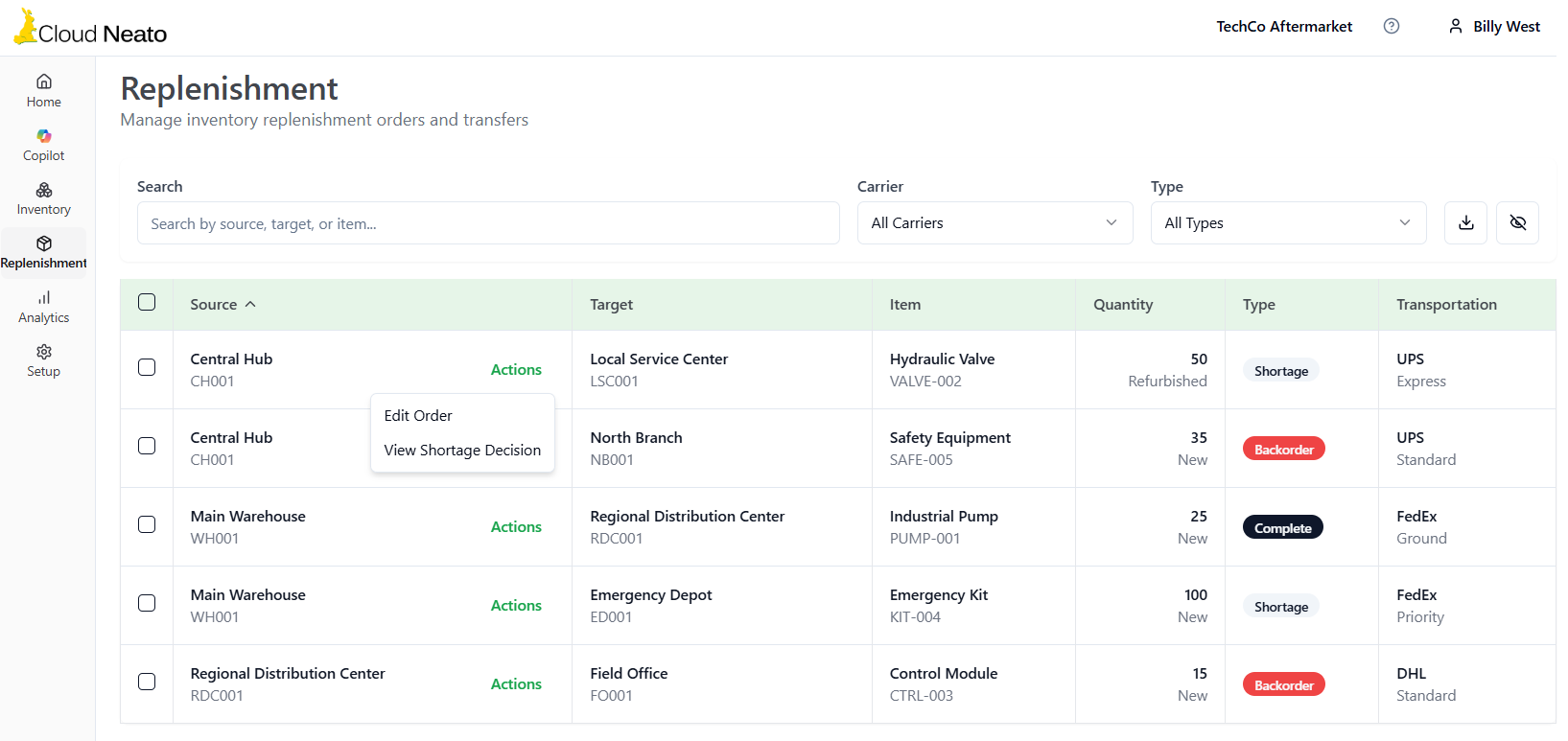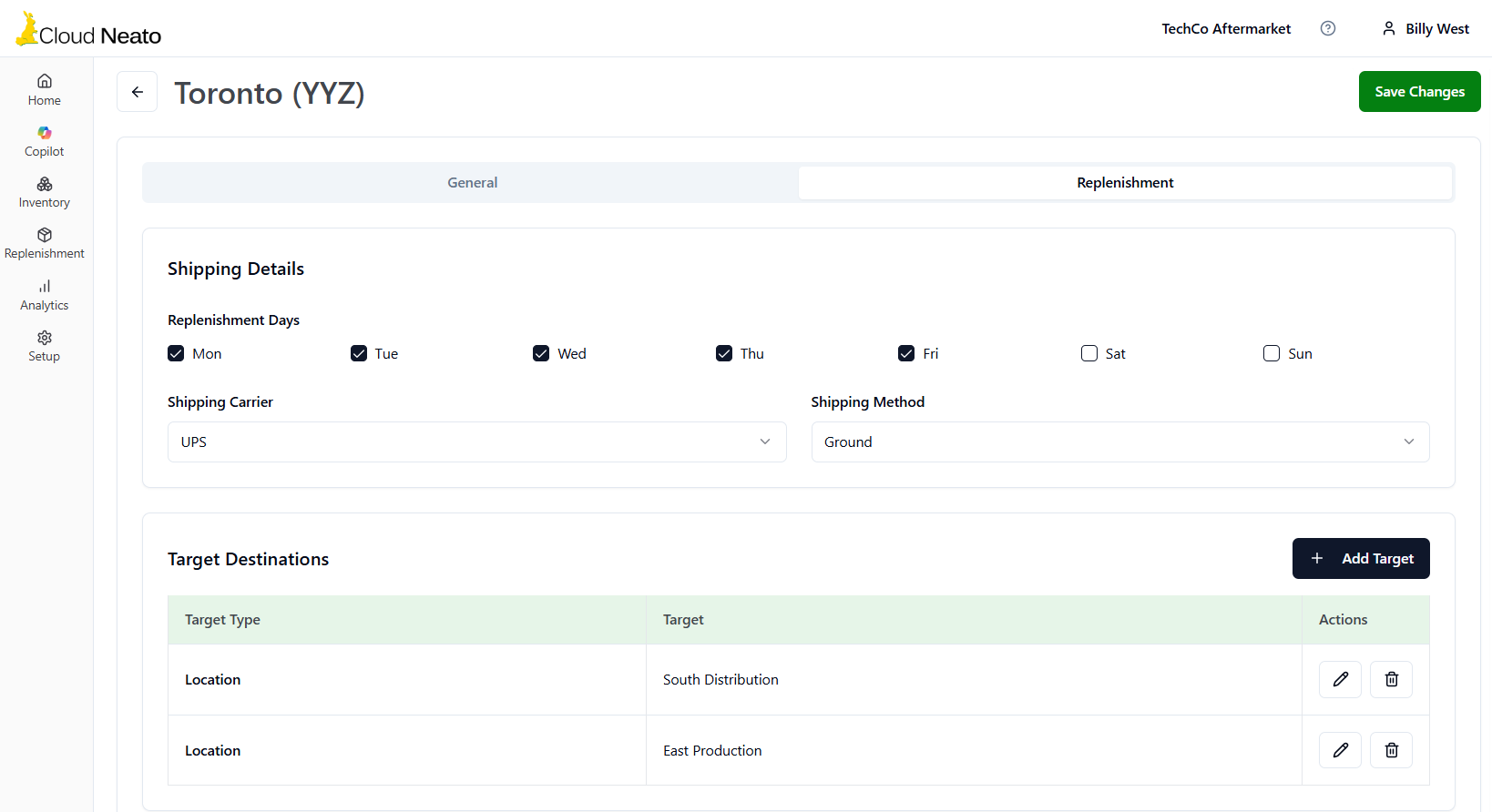Automate replenishment for your FSL network
Get the most service level from your available inventory with automated replenishment that utilizes excess, comprehends part substitutions, and prioritizes shortages.
Automate replenishment with a solution that can be deployed in days based on rules that match the unique design of your FSL network.


Smarter Replenishment Logic That Reflects Real-World Constraints
Cloud Neato goes beyond min/max or reorder point logic. Our replenishment engine factors in excess from nearby FSLs, active part substitutions, and real-time demand trends to improve inventory utilization and reduce service delays.
Whether you manage hundreds of locations or just a few high-priority service depots, Cloud Neato’s replenishment logic adapts to your stocking policies, transfer lead times, and installed base.
Eliminate Manual Replenishment Processing
Legacy workflows depend on tribal knowledge and static spreadsheets. Cloud Neato replaces manual orders with always-on automation that monitors stocking levels, identifies replenishment needs, and generates prioritized transfers or purchase requests—so your team can focus on exceptions, not execution.
Smart Replenishment is transparent, auditable, and customizable by location or service region.
Frequently Asked Questions
What is service parts replenishment?
Service parts replenishment is the process of restocking forward stocking locations (FSLs) or service depots to maintain sufficient inventory to meet service level agreements. It involves planning transfers based on Approved Stock Levels (ASL), part usage, and lead times.
How is replenishment different from traditional inventory planning?
Replenishment focuses on maintaining optimal stock at service-focused forward locations rather than large distribution centers. It often requires faster response times, incorporates part substitution logic, and prioritizes availability for same-day or next-day service contracts.
Can replenishment be automated?
Yes. Modern service supply chains use rule-based automation and AI to continuously monitor inventory levels, trigger replenishment actions, and optimize stock balancing across the network. Automation reduces manual errors and improves responsiveness to changing demand.
Why is manual replenishment planning risky?
Manual planning often relies on spreadsheets and tribal knowledge, which can lead to stockouts, overstocking, or misaligned inventory. Automation and system-based logic improves resilience, reliability, and scalability.